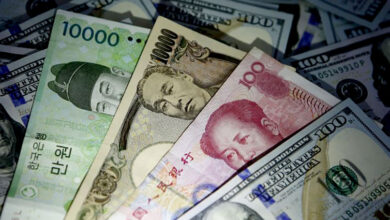Asian currencies fall on Chinese trade data and Fed rate worries.

Most Asian currencies dipped on Monday as conflicting Chinese trade data stoked concerns about demand, while the dollar rose on hopes the Fed will rise rates next month.
The Chinese yuan stayed mostly still at 6.7620 as investors weighed strong exports against a smaller-than-expected rise in imports.
China’s trade balance hit a record high in July, but a smaller-than-expected growth in imports stoked fears about weak demand in the key Asian export destination.
Countries with strong Chinese trade exposure saw their currencies fall. The Philippine peso and Indonesian rupiah both decreased by 0.1%.
The data comes as China lifts COVID-related lockdowns. Lockdowns hurt Chinese economic development, which rippled around Asia. This is why China’s inflation has been growing slower than the rest of the world, and Wednesday’s number is likely to follow the same pattern.
Data revealed that despite weak imports, China’s thirst for industrial metals—Australia’s major export—remained stable. Strong commodity exports to China helped Australia post a record trade surplus.
The Japanese yen lost 0.3% versus the dollar to 135.34, the weakest in Asia.
Rising commodity prices caused Japan’s first current account deficit in five months in June.
Expectations that the Fed would raise interest rates considerably in September also weighed on the yen and other currencies. Friday’s dollar index and futures rose 0.9%.
stronger-than-expected Last week’s payroll data supports this. Investors worry that the Fed may raise rates more than expected to fight inflation because wages in the U.S. are going up steadily.
On Wednesday, U.S. CPI inflation statistics will likely influence the Fed’s interest rate position.





